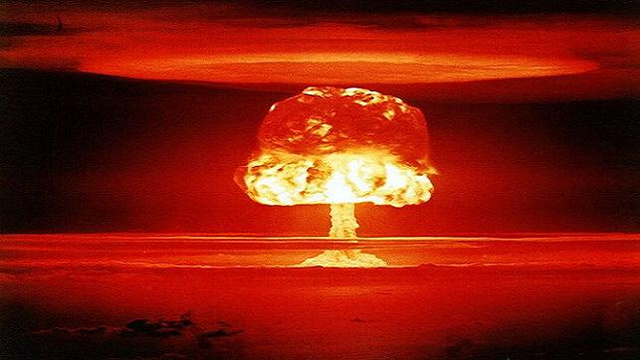
It was inevitable that reports of India increasing its defence budget once again would be met with concern in certain quarters. Unfortunately, even more moderate voices are perpetuating dangerous narratives. In fact, for anyone interested in improving Pakistan’s national security, Dawn’s analysis is terrifyingly misguided.
According to the English-language daily, India’s increased defence budget is cause for concern because “India remains, in terms of its military capabilities, the principal threat to Pakistan’s security”. Such a statement coming after the deaths of 50,000 at the hands of jihadi terrorists whose almost daily attacks continue uninterrupted exposes the newspaper as horribly out of touch with reality. Ironically, reality is also contained in Dawn’s editorial if only they would open their eyes to see it.
The truth, as is often the case, can be located using not emotional strategic geopolitical analysis, but basic arithmetic: “[India’s] Military expenditure as a percentage of GDP is below two per cent and dropped further this year.”
India’s announced defence budget is $40 billion, and that is less than 2 per cent of India’s GDP. However the same number is over 17 per cent of Pakistan’s GDP. Our current defence budget is roughly $7 billion, around 3 per cent of GDP. As a function of the national economy, India is already spending less on defence than we are. Trying to spend as much as India would not only bankrupt the country, it would be an inefficient and wasteful use of national resources.
India’s land mass is 1.3 million square miles compared to Pakistan’s which is about 307,000 square miles. India’s population is 1.2 billion compared to Pakistan’s which is only 180 million. Obviously it will require a much greater amount of resources to defend a larger land mass and population, not even mentioning the maritime requirements for defending 7,500 km of coast line compared to Pakistan’s 1,000 km. Comparing necessary defence expenditures for India and Pakistan without considering such factors is comparing apples to oranges.
Unfortunately, Dawn’s analysis is not only mathematically unsound. Strategically, it approaches insanity. This paragraph shows just how dangerous the delusion is:
For India, there should be a realisation that goes beyond the plain numbers: the further away it pulls from Pakistan in the conventional field, the more it will create pressure on Pakistan to perhaps lower the nuclear threshold to stave off the threat of conflict.
Lowering the nuclear threshold would not ‘stave off the threat of conflict’, it would actually make it more likely. Unlike conventional weapons, nuclear weapons are indiscriminate and massively destructive. Because of this, the threat that nuclear weapons pose is also much greater than their conventional counterparts. No matter how much India increases its conventional military strength, it will not be enough to counter Pakistan’s nuclear deterrent. However, if Pakistan lowers the threshold for using nuclear weapons, that will also necessarily lower the threshold for India to respond by unleashing its own nuclear weapons against Pakistan. The outcome would be mutually assured destruction, and there is a reason it is known as ‘MAD’.
Pakistan is already estimated to have more nuclear weapons than India, and is believed to have the fastest growing nuclear arsenal in the world. Having this strong nuclear deterrence allows Pakistan to ensure national security without having to go bankrupt trying to achieve conventional parity with India which, as was proven above, is a mathematical impossibility. Any doubts about the effectiveness of this deterrence was wiped away in 1999 when Gen Musharraf unadvisedly initiated the conflict in Kargil. There is no need to lower any threshold to maintain deterrence.
Instead of fueling a paranoid obsession with India’s conventional defence expenditure, our media should be encouraging leaders in both the government and military to turn their attention to the real threat: rising extremism and jihadi terrorists operating across the country. This would not only reduce the threat of terrorism, it would also reduce the threat of Indian aggression. And isn’t that what we’re trying to achieve anyway?
![]()






India will remain main foe of Pakistan that is why Gen. Raheel Shareef created new fighting doctrine of 2 front war for Pakistan Army, he is the architect of all new changes in training, structure, doctrine and its implementation. Indian nuclear expansion and its military modernization is a real threat for Pakistan.
India has been world’s top arms buyer for the last three years according to a report released by the Stockholm International Peace Research Institute (SIPRI). The unbridled spending in military sector has reached to the peaks during last three years. Unfortunately, this blind drive for the arms accumulation and military modernization unleashes an unending arms race in South Asia which resulted in deterioration of prevalent strategic stability between India and Pakistan.
I beg to differ with you on that. India doesn’t have an indigenous military industrial complex due to which we end up importing a major share of arms and ammunition. Besides this expenditure is to narrow the gap with China.